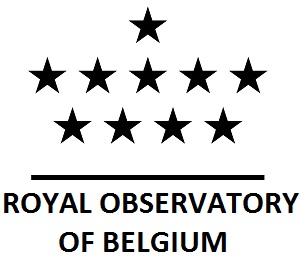CSTG Guidelines or the ISGN
The following text is an extract from the CSTG (Commission on International Coordination of Space Techniques for Geodesy and Geodynamics) - Progress Report 1998
The International Space Geodetic and Gravimetric Network (ISGN)
On behalf of the WG prepared by H. DREWESDeutsches Geodätisches Forschungsinstitut, Marstallplatz 8, D-80539 Münich, Germany
[email protected]
1.Introduction
The Working Group on the establishment of an International Space Geodetic and Gravimetric Network (ISGN) was created in Rio de Janeiro, September 5, 1997, in a joint meeting of CSTG, MRS and IGS during the IAG Scientific Assembly. The Working Group members are HERMANN DREWES (chair), CLAUDE BOUCHER (IERS/ITRF representative), IVAN MUELLER (FRCN initiator), JOHN BOSWORTH (CSTG Geodetic and Geodynamic Sites Subcommission), Tom HERRING (CSTG Project on Coordination and Combination of Space Geodetic Analysis). The installation of the Working Group was an outcome of the previous IAG/ CSTG Working Group on the "IUGG Fundamental Reference and Calibration Network" (FRCN). The FRCN final report (DREWES and BEUTLER 1997) had been presented to the IAG Executive Committee at its meeting in Potsdam (Germany) on April 28, 1997. The main conclusion of this report was that there are no compelling scientific reasons to identify stations as FRCN station.
It was argued that the combination of all existing space geodetic networks (e.g., VLBI, SLR, GPS) as an International Space Geodetic Network (ISGN) is well suited to take over most of the tasks that were considered for FRCN. Based on this conclusion, the following recommendations were made:
- The ISGN shall formally be established
- The ISGN shall be an open network
- Criteria have to be defined to include a station into the ISGN
-
CSTG shall take care of the final definition of the ISGN - IERS will make routine use of the ISGN data and will promote the network maintenance and optimization in cooperation with and in support of CSTG.
The FRCN report and its conclusions and recommendations were accepted by the IAG Executive Committee during its April 28, 1997 meeting, and the corresponding Working Group on the ISGN was formed.
2. Working Group Activities
The ISGN Working group met in September 1997 in Rio de Janeiro for its constitutive meeting. As the main goals it was specified :
- to define the criteria for including a station into the ISGN (sites and analysis criteria, IERS requirements),
- to install a better cooperation between the individual techniques.
Further meetings of ISGN Working Group members took place at San Francisco in December 1997 and at Nice in April 1998. A draft version of the sites and analysis criteria was set up and presented to the CSTG Executive Committee and to the MRS Directing Board at their meetings during the General Assembly of the European Geophysical Society (EGS) in Nice, France, on April 19, 1998. The criteria were accepted with some minor changes.
During the following months there was an intensive discussion among the Working Group members on the changes to be made. This discussion was mainly focussing on the instrumentation criteria, i.e., which space geodetic instruments should form the minimum set to qualify a site as an ISGN station. The result of this discussion is included in actual criteria presented in the annex to this report.
3. Future activities
The next step is to set up a list of space geodetic stations fulfilling formally the defined site criteria. These stations have to be evaluated and qualified with the goal to obtain an optimum network configuration. The managers of the stations in consideration have then to be asked whether they are willing to join the ISGN in a cooperative way. In the affirmative it has then to be assured that the analysis criteria and IERS requirements are accomplished, too.
DREWES H., BEUTLER G.: Report on the IAG/CSTG Working Group "IUGG Fundamental Reference and Calibration Network". CSTG Bulletin No. 13, 20-35, Munich 1997.
Attachment
ISGN Sites Criteria
I. Geographical Criteria
ISGN sites are established for specific space geodetic purposes. Other considerations are :
- For each type of space geodetic technique the site occupies an important site
location in the global network. Consideration must be given to :
- Distances to nearest stations
- Relation to regional geodetic network
- Proximity to ocean tide gauges.
- Clear horizon with few natural or man made obscurations rising higher than 5 degrees above the horizon.
- Relatively close to crew amenities such as housing and food.
- Accessible by road.
II. Geological Criteria
The ISGN site should :
- Be on a stable regional crustal block, as far as possible removed from active faults. In areas where this is not possible, the surface patterns and activities of nearby faults should be known, and active faults should not cut through site.
- Be on firm, local, stable material preferably basement outcrop : certainly not on soil that might slump, slide, heave, or vary in elevation because of subsurface liquid variations.
- Have small ground water fluctuations, or at least good ground water models from regional water level observations.
III. Environmental Criteria
The ISGN site should :
- Be in an area of gnerally clear visibility and low water vapour and cloud cover. This is particularly important for satellite laser ranging systems.
- Be free of, or have areas shielded from radio frequency interference, light polution.
- Be free of, or shielded from high winds and free of natural or man-made surface vibrations form ocean waves or heavy vehicular traffic.
IV. Site Monumentation Criteria
The ISGN station should provide the following :
- Monuments which are isolated from unstable surface material and extend into stable subsurface formation
- Monuments shall be of ultra-stable design (various designs are available through the CSTG / GGS Sub- commission
- Specialized monuments should be provided for specific systems.
- Guest Observer monuments should be provided.
- Ancillary monuments should be provided (calibration, reference, azimuth, etc.)
- A minimum of three footprint monuments should be located 10 to 15 kms from the observing site. This network will aid in delineating between local, regional, and large scale ground motions.
- The instrument antenna or telescope focal point should be so designed as to provide the maximum stability over time and the instrument ground support structure (pad) shall be designed to be equally stable.
- For large VLBI or SLR systems, a highly stable ground monument should be provided to serve as reference mark for the observing instrument antenna or telescope focal point.
V. Site Surveying Criteria
All surveying at ISGN stations should be at the highest precision level possible, and should consist of :
-
Conventional three dimensional ground surveys with 1 to 3 mm precision that :
- Tie all site monuments together.
- Tie the focal point of large systems to a ground monument.
-
GPS surveys should be used to :
- Tie the station monuments to the footprint monuments.
- Tie the station monuments to nearby tide gauge monuments.
- Tie the station into the host countries' first order control network.
- Tie the individual monuments in case of sites extended over several kilometers.
- Survey measurements and field notes should be preserved and, along with reduced results, be made available to other researchers and organizations responsible for site catalogues.
- All survey data should be rigorously and globally adjusted and the results be made available according to GGSN standards (output files from adjustment softwares such as SINEX files).
VI. Operational Criteria
ISGN sites should meet the following operational criteria :
- Be maintained and operated by an institution, either government or academic, that has a long term commitment to operating, maintaining, and conducting scientific experiments at the site.
- Conduct daily operations.
- Have permanent maintenance and operating personnel available.
- Provide security for equipment and station personnel.
- Have ample and reliable power.
- Have efficient systems for scientific and administrative data transmission and receiving (i.e., telephone, fax, electronic mail), including a reliable permanent Internet connection.
VII. Instrumentation Criteria
In order to qualify as an ISGN Station, a site should have, at a minimum, the following instrument systems :
- At least one high-precision space geodetic system (SLR or VLBI).
- A permanent, high performance, geodetic GPS receiver accepted by the IGS or a DORIS beacon.
- A basic set of high quality meteorological sensors for temperature, barometer pressure, and humidity.
Other space geodetic or geophysical systems, such as absolute and earth tide gravimeters or seismometers will enhance the value of the location.
ISGN Analysis Criteria
I. Qualification Criteria for Inclusion of an Instrument System at an ISGN Site
In order to be accepted for inclusion at an ISGN Station, a geodetic measurement system (SLR, VLBI, etc.) must :
- Have a documented and consistent precision that is traceable to internationally recognized standards (collocations, intercomparisons) as defined by the Service to which it belongs (IGS, ILRS, IVS etc.)
- Provide data that are compatible with internationally recognized standards (CSTG, IERS, IGS etc.)
II. Data Distribution Criteria
Observation data of an ISGN site should :
- Perform reliably as a provider of data on a regular, timely basis according to the standards of the corresponding technique (IGS, ILRS etc.)
- Meet the specific data format requirements of the corresponding technique.
- Fulfill all the respective quality requirements (reliability, precision, number of observations).
III. Data Analysis Criteria
Data from at least two techniques provided by an ISGN site should :
- Be processed as part of a global analysis by at least three analysis centers, one of which lies on a different continent than the station considered.
- Result in geodetic parameters (global position coordinates, velocities, absolute gravity,...) of high quality and of general interest.
IERS Requirements
The IERS requirements are well taken into account by the general ISGN sites and data analysis criteria. Because of the high quality of sites and data, ISGN stations should :
- Play a prominent role in the IERS Terrestrial Reference Frame (ITRF), in particular be well identified in IERS publications.
- Be used particularly in realizing global datums (geometric, kinematic, gravimetric etc.).
- Serve as key stations in the calibration process of different techniques.
- Be considered by preference in combination procedures of different techniques.
Installation of a Better Cooperation between Individual Techniques
CSTG, IERS, and the Services of the individual techniques (IGS, ILRS, etc.) should form a cooperative body to discuss and to solve all the problems of common interest.

